The technique of planting cherry seedlings in spring and autumn
The cherry tree is almost as much a regular on the average garden plot as the apple tree. Mostly common cherries are found, but some grow felted cherries, cherries and shrubs. The fruiting cycle of a tree is about 15 years. Productivity, as well as growth and development rates, directly depend on how well the location is chosen, on the quality of the soil and compliance with the cherry planting technique.
Seat selection
Before buying seedlings, you must decide in advance on their location on the site. Cherry is a light-loving tree. If you plant it in the shade, then fruiting will be inactive, and the fruits are crushed. The optimal place is about 3 m from the fence on the south or west side of the site. Dwarf cherries can be planted closer, their height is no more than 2 m.
Advice
Most varieties are not capable of self-pollinating on their own, therefore, for a bountiful harvest, it will be correct to plant a couple of cherries of a different type nearby (at a distance of 2.5-3 m).
Cherry roots are sensitive to waterlogging, so it will be uncomfortable in a swampy area, which will result in poor growth and disease.
As for the composition of the soil, the cherry grows well on sandy loam and loamy soils. It is important that the acidity is within the normal range (for cherries - 7). If the soil is highly acidified (horsetail, wild sorrel, colza) readily grow, then preliminary liming is performed (400 g of lime per 1 m2), but not in the year of planting.
Important!
Liming of the soil is carried out before the introduction of mineral fertilizers.
Selection of seedlings
It is best to purchase very young grafted seedlings aged 1-2 years 60-80 cm high and about 2 cm in trunk diameter, the fibrous root system should be about 25 cm long. The older the planting material, the later the fruiting will begin. If the seller claims that the cherry seedling is 2 years old, but its growth is significantly more than 100 cm, then the plant is overfed with nitrogen, and this significantly reduces winter hardiness.
When choosing a cherry variety, you should focus on the climate. In many regions, in recent years, it has noticeably shifted towards a cooling, so many prefer frost-resistant species bred for the Urals and Siberia:
- University;
- Altai early;
- Maksimovskaya;
- Blizzard.
These varieties are resistant to cold weather, after winter they come out with minimal losses, and are also quite loyal to the cool summer: fruiting does not deteriorate.
Advice
The grafted seedlings begin to bear fruit faster than their own rooted ones.
Experienced gardeners buy cherry seedlings in the fall. At this time, there is more choice and a lower price. They are stored until spring right on the site: a trench is dug about 40 cm deep, seedlings are placed in it at an angle of 45 ° with the crown to the south. The root part and about 2/3 of the trunk are sprinkled with soil, then abundant watering is done. Spruce branches are thrown into the winter.
Boarding time
The season when planting cherries is most optimal depends on the climatic conditions. In autumn, fruit trees should be planted 20 days before the first frost and 1.5 months before the onset of stable cold weather. In most regions, this time is unpredictable, and if the winter falls out frosty, then the seedling will die, not having time to assimilate with the soil. Therefore, autumn planting is the prerogative of the southern regions.
The autumn laying of a garden has its own advantages: the buds of the seedlings are dormant, all the strength of the plants goes to the formation and strengthening of the root system until the soil freezes to -4 ° C. In spring, young cherries immediately begin an active growth of green mass.For the middle lane and the Moscow region, the period of autumn planting begins after leaf fall and ends in mid-October. For the southern regions it is extended until mid-November.
For regions with a cool climate, the best option is to plant cherries in the spring. So the likelihood of successful engraftment and healthy development of the seedling is more likely. You need to plant before bud break (early or mid-April).
In theory, you can plant cherries in the summer. If the pit is prepared correctly and watering is abundant, then the plant will take root, but it will hurt, fruiting will be delayed for 1-2 years.
If cherry seedlings are purchased in containers, then they can be planted at any time from spring to autumn. Such a plant does not need time to restore and build up the root system, and the earthen ball contains enough fertilizers.
How to plant cherries in spring
According to the rules, a pit for fruit trees is prepared in the fall, but this can be done 2 weeks before planting.
Advice
If the root system of the seedling is overdried, it must be immersed in a growth stimulant solution (for example, "Kornevin") for several hours.
Step-by-step instructions for planting cherry seedlings
- A hole is dug about 80 cm in diameter and 60 cm deep.
- The soil selected from the pit is mixed with 1 kg of ash (if the soil is acidic), a bucket of sand (if clay prevails), 70 g of potassium (potassium sulfate) and 250 g of phosphorus fertilizers. Nitrogen and lime are not added to the hole.
- Slightly to the side of the center of the pit from the north side, a safety stake (about 2 m high) is driven into the bottom, to which, after planting, a cherry seedling ("figure eight") is tied.
- The prepared soil mixture is poured with a mound on the bottom of the pit (by about 2/3), about 20 cm of fertile soil without additives is placed on top.
- The roots of the seedling are spread over the surface of the poured earthen cone. If the planting material was purchased in a container, then the earthen lump is carefully removed from the container, damaged and rotten roots are immediately removed. There are options where cherry seedlings are sold in a special degradable material that does not need to be removed when planting.
- The pit is filled with the remaining soil mixture so that the root collar of the cherry seedling remains at the soil level, for this you need to hold it with your hand. If the pit is fresh, then it is better to place the neck higher (about 2-3 cm), and after shrinkage it will level with the surface.
- The trunk circle is lightly rammed and mulched (but the distance within a radius of 10 cm from the trunk should be free). A small earthen roller is raked along the edges to retain water. The watering rate per plant after planting is 20-30 liters.
The autumn planting of cherries is carried out in the same way. For the winter, add mulch (up to 15 cm), whitewash and tie the trunk with spruce branches. This will protect you from pests, frost damage and burns. In the spring, before the kidneys begin to awaken, you can trim branches by about 1/3. Such a procedure will help to adjust the ratio between the roots and the aboveground part of the cherry seedling.
Care
In the first years of planting, before the beginning of fruiting, young cherry seedlings do not need additional feeding, since all the necessary substances have already been laid in the pit for 3 years. In May, young cherries can be pour urea (20 g per bucket of water). The application of fertilizers (nitrogen, phosphorus, potash) under the grown tree begins after the first abundant flowering (in May-June).
For young seedlings in the early years, the most important thing is watering and protection from pests. In dry weather, each plant requires two buckets of water.
However, insects can cause much more significant damage to the seedling than drought.
- The beetle larva eats up the roots, which is why the plant often dies. The larvae are collected on the soil by hand.
- The sapwood is a beetle that gnaws holes in the bark. This leads to a gradual drying out of the branches.
- Zlatka is a beetle whose larvae eat up the roots, and the adults gnaw out the buds, bark and leaves of seedlings.A good way to get rid of this pest is to increase humidity with watering and irrigation. In such conditions, the larvae of the goldfish perish.
- The cherry moth caterpillar damages the entire aerial part. You can only fight with insecticides.
- The cherry slimy sawfly sucks the juice out of the leaves pointwise, disrupting the development of the seedling.
- Aphids are able to completely stop the development of young cherries, destroying new shoots. You can fight with soapy water.
Treatment of seedlings from pests is carried out with preparations Fitoverm, Akarin, Iskra Bio. Before maturation and the beginning of the fruiting period, it is important to get rid of the larvae in the bark and soil, as this is a direct threat to the crop.
A fungus (coccomycosis, moliniosis, scab) can settle on cherries, the problem is especially urgent in wet weather. As a result, a large percentage of green mass is lost, the seedling remains unprepared for winter, which seriously weakens its development. The situation can be corrected by several treatments with Bordeaux liquid or iron sulfate. It is important to observe the dosage, otherwise there is a high risk of burning the remnants of leaves and buds. Also used drugs "Topaz", "Fundazol".
Cherry seedlings develop quickly enough if pests are stopped in time and diseases are cured. Subsequently, it will be necessary to devote time to the formation of the crown, since this also affects the future harvest. A young seedling begins to bear fruit already in the 3rd year, and in the 4th or 5th year it is already possible to evaluate the variety.
If we take into account all the nuances of planting cherries (selection of varieties, "company" from other species for cross-pollination, soil composition, sunny place), then you can soon count on a bountiful harvest.



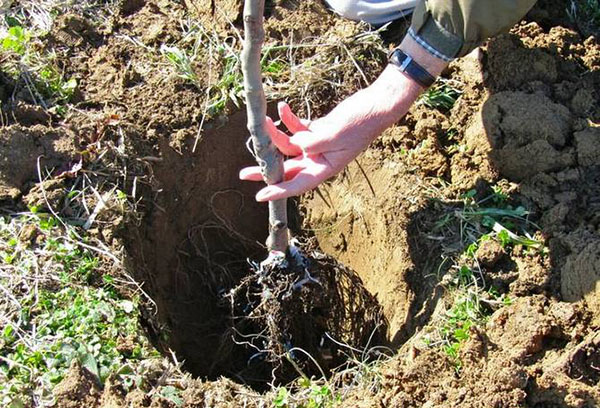
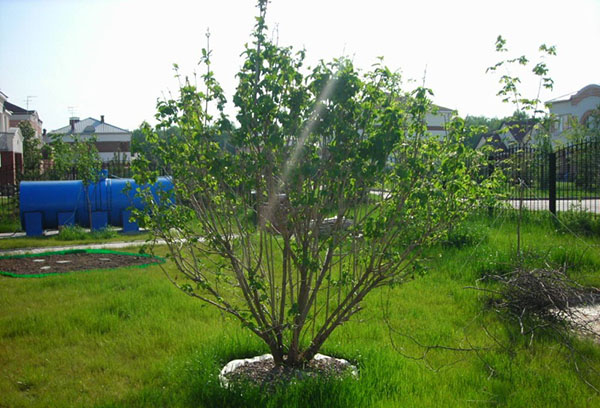
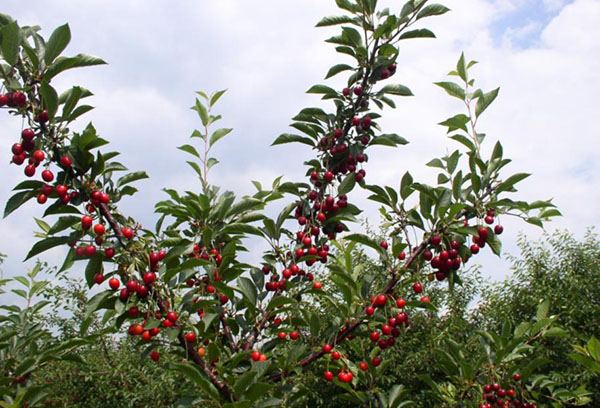
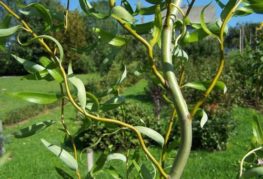
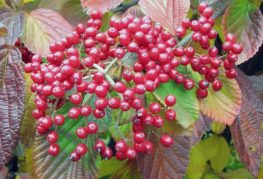
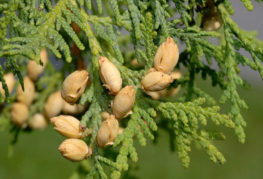
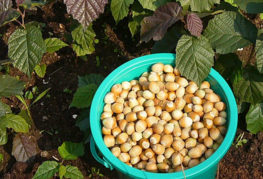
I plant cherries exclusively using purchased seedlings. So I am confident in their quality, there is no doubt that the tree will be accepted, etc. The neighbors say that I was just lucky with the seedlings, so I never had any problems.